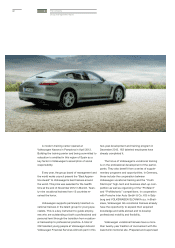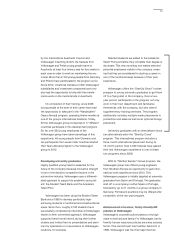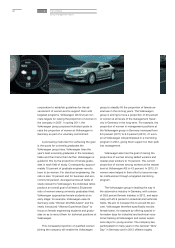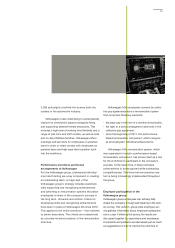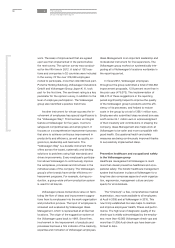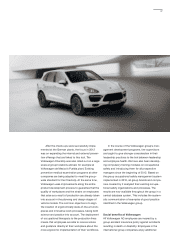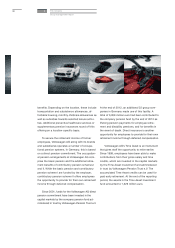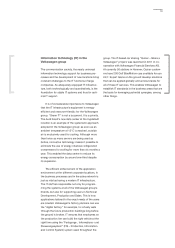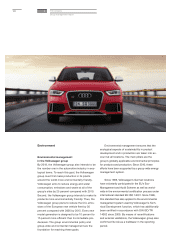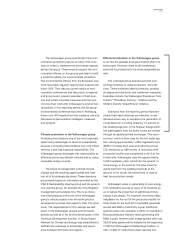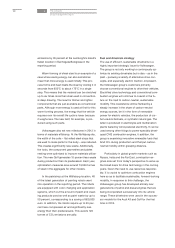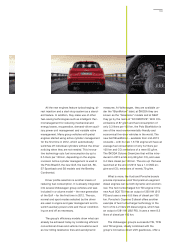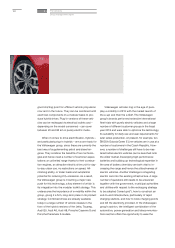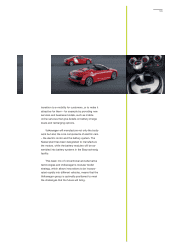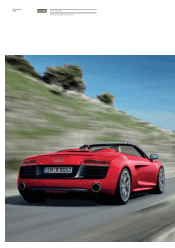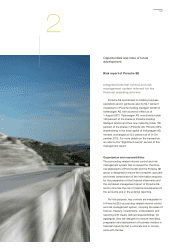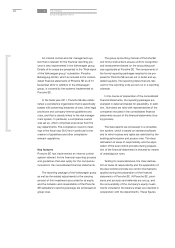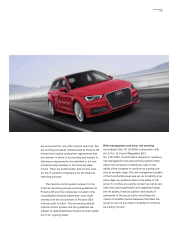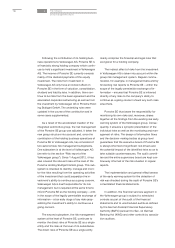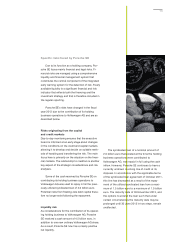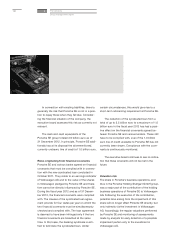Porsche 2012 Annual Report Download - page 106
Download and view the complete annual report
Please find page 106 of the 2012 Porsche annual report below. You can navigate through the pages in the report by either clicking on the pages listed below, or by using the keyword search tool below to find specific information within the annual report.
emissions by 30 percent at the Lamborghini brand’s
Italian location in Sant’Agata Bolognese in the
reporting period.
Warm forming of sheet steel is an example of a
case where saving energy can also sometimes
mean that more energy is used initially. This pro-
cess forms and heat-treats the steel by cooling it in
seconds from 950°C to about 175°C in a single
step. This means that the material can be stretched
up to six times more than steel used in convention-
al deep drawing. The result is thinner and lighter
components that are just as stable as conventional
parts. Although more energy is used at first for this
warm forming process, the energy that the vehicle
requires over its overall life cycle is lower because
it weighs less. The new Golf, for example, is pro-
duced using such parts.
Volkswagen also set new milestones in 2012 in
terms of materials efficiency. At the Wolfsburg site,
the width of the coils – flat-rolled steel strips that
are used to make parts for the body – was reduced.
This creates significantly less waste. Additionally,
the tools, the component geometries and plates
nesting were optimized to improve materials utiliza-
tion. The new Golf generates 15 percent less waste
during production than its predecessor. Each year,
optimization measures save around 73,000 tonnes
of steel in the aggregate for other models.
In the paintshop at the Wolfsburg location, 48
of the latest generation of painting robots went
into operation in the reporting period. The robots
are equipped with color changing and application
systems, which cut the amount of paint and clean-
ing products used as well as paint waste by up to
50 percent, corresponding to a saving of 800,000
euro. In addition, the robots require up to 20 per-
cent less compressed air and significantly less
energy than their predecessors. This avoids 120
tonnes of CO2 emissions annually.
Fuel and drivetrain strategy
The use of efficient, sustainable drivetrains is a
highly important strategic issue for Volkswagen.
The group is not only working to continuously op-
timize its existing drivetrains but is also – as in the
past – pursuing a variety of alternative drive con-
cepts, and especially electric traction. At present,
the Volkswagen group’s customers primarily
choose conventional engines to drive their vehicles.
Electrified drive technology and conventional com-
bustion engines will continue to coexist in the fu-
ture on the road to carbon-neutral, sustainable
mobility. This coexistence will be flanked by a
steady increase in the share of carbon-neutral
energy sources, be it in the form of renewable
power for electric vehicles, the production of car-
bon-neutral biofuels, or synthetic natural gas. The
latter is produced in electrolysis and methanation
plants fueled by wind-powered electricity. It can be
used among other things to power specially devel-
oped CNG combustion engines. It addition, the
group is examining innovative renewable fuels that
bind CO2 during production and that put carbon-
neutral mobility within grasping distance.
Particularly in global growth markets such as
Russia, India and the Far East, combustion en-
gines look set from today’s perspective to serve as
the broad basis for drive technology in the coming
years. Given the need to use resources responsi-
bly, it is crucial to optimize combustion engines
here so as to facilitate sustainable, forward-looking
mobility. In response to this challenge, the
Volkswagen group has developed entirely new
generations of petrol and diesel engines that are
being incorporated successively into its vehicle
range. These drivetrains were used in the succes-
sor models for the Audi A3 and Golf for the first
time in 2012.
2The company
Group management report
2102


